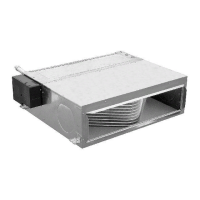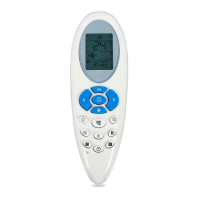4-3 62-10630
f. After repairs have been made, be sure to perform a
refrigerant leak check (refer to paragraph 4.8), and
evacuate and dehydrate the low side (refer to para-
graph 4.9.4).
g. Check refrigerant charge (refer to paragraph 4.10.1).
4.8 REFRIGERANT LEAK CHECKING
a. The recommended procedure for finding leaks in a
system is with an electronic leak detector. Testing
joints with soapsuds is satisfactory only for locating
large leaks.
NOTE
Only refrigerant 404A should be used to pres-
surize the system. Any other gas or vapor will
contaminatethesystemwhichwillrequireaddi-
tional purging and evacuation of the system.
b. If system is without refrigerant or the low side has
been pumped down, charge with refrigerant 404A to
build up pressure between 30 and 50 psig (2 to 3.4
bar). Remove refrigerant cylinder and leak check all
connections.
c. Remove test refrigerant using a refrigerant recovery
system and repair any leaks. Evacuate and dehy-
dratetheunitorlowsideasapplicable.(Refertopara-
graph 4.9) Charge unit with refrigerant. (Refer to
paragraph 4.10)
4.9 EVACUATION AND DEHYDRATION
4.9.1 General
Moisture is the deadly enemy of refrigerant systems.
The presence of moisture in a refrigeration system can
have many undesirable effects. The most common are
copper plating, acid sludge formation, “freezing-up” of
metering devices by free water , and formation of acids,
resulting in metal corrosion.
4.9.2 Preparation
a. Evacuateanddehydrateonlyafterpressureleaktest.
(Refer to paragraph 4.8).
b. Essential tools to properly evacuate and dehydrate
include a good vacuum pump (5cfm = 8m
3
/h volume
displacement)andagoodvacuumindicatorsuchasa
thermocouple vacuum gauge (vacuum indicator).
The tools are available from Carrier T ransicold. For
the pump, order part number 07--00176--11 and for
the indicator order part number 07--00414--00.
NOTE
Useofacompoundgaugeisnotrecommended
because of its inherent inaccuracy.
c. If possible, keep the ambient temperature above
60°F (15.6°C) to speed evaporation of moisture. if
ambient temperature is lower than 60°F (15.6°C),ice
might form before moisture removal is complete.
Heat lamps or alternate sources of heat may beused
to raise system t emperature.
d. Additionaltimemay be saved during a complete sys-
tem pump down by replacing the filter--drier with a
section of copper tubing and the appropriate fittings.
Installation of a new filter--drier may be performed
during the charging procedure.
4.9.3Evacuation and Dehydration -- Complete
System.
a. Remove refrigerant usinga refrigerant recovery sys-
tem.
b. The recommended method to evacuate and dehy-
drate the system is to connect three evacuation
hoses to the vacuum pump and refrigeration unit as
shown in Figure 4-2. (do not use standard service
hoses as they are not suited for evacuation pur-
poses). Also, as shown, connectan evacuationman-
ifold with special evacuation hoses to the vacuum
pump, to the electronic vacuum gauge and to the re-
frigerant recovery system.
c. Test the evacuation system for leaks by backseating
the unit service valves and drawing a deep vacuum
with the vacuum pump and gauge valves open. Shut
off the pump and check to see if the vacuum holds.
Repair leaks if necessary.
d. Midseat the refrigerant system service valves.
e. Open the vacuum pump and electronic vacuum
gauge valves, if they are not already open. Start the
vacuum pump. Evacuate unit untilthe electronic vac-
uum gauge indicates 2000 microns. Close the elec-
tronicvacuum gauge andvacuumpump valves. Shut
off the vacuum pump. Wait a few minutes to be sure
the vacuum holds.
f. Break the vacuum with clean dry refrigerant 404A.
Raisesystem pressure to approximately 2 psig (0.14
bar).

